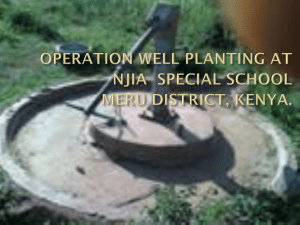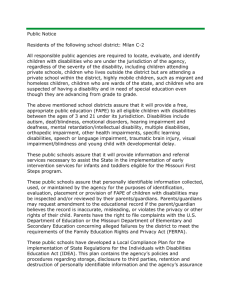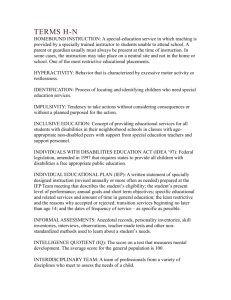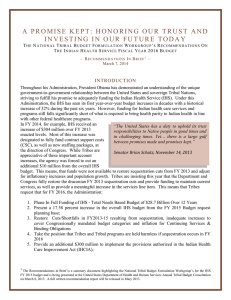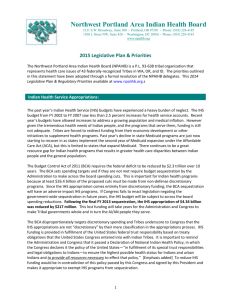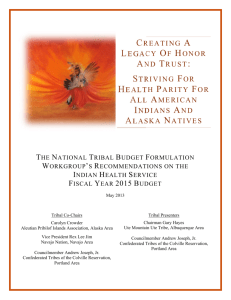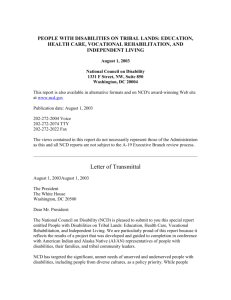Douglass_Christian
advertisement
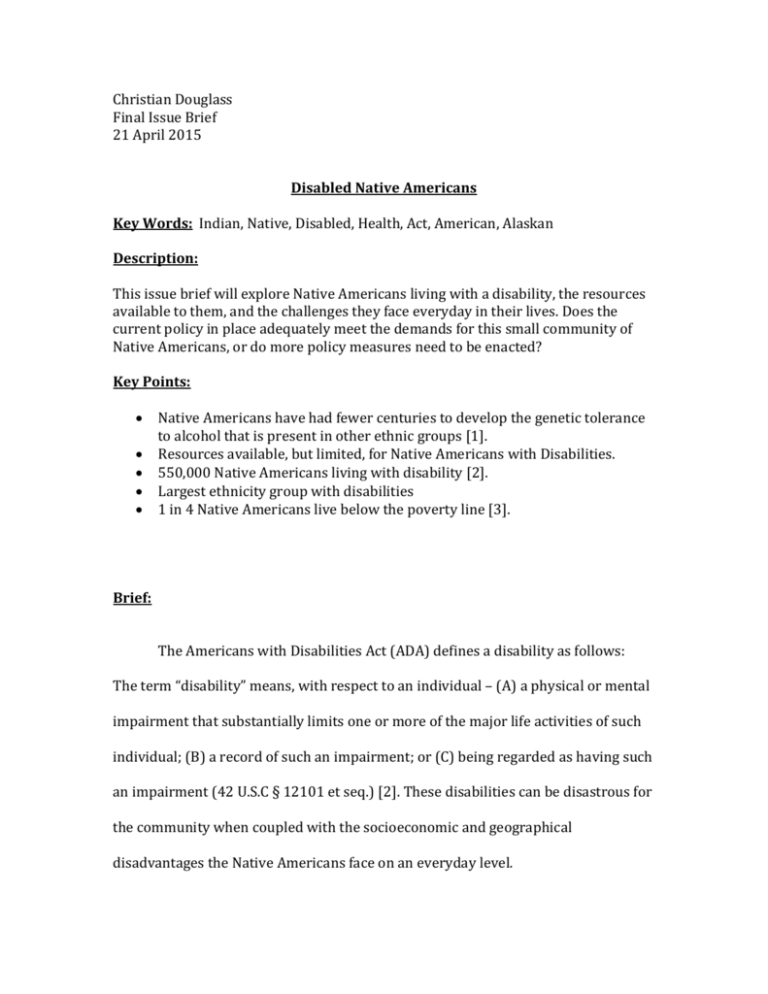
Christian Douglass Final Issue Brief 21 April 2015 Disabled Native Americans Key Words: Indian, Native, Disabled, Health, Act, American, Alaskan Description: This issue brief will explore Native Americans living with a disability, the resources available to them, and the challenges they face everyday in their lives. Does the current policy in place adequately meet the demands for this small community of Native Americans, or do more policy measures need to be enacted? Key Points: Native Americans have had fewer centuries to develop the genetic tolerance to alcohol that is present in other ethnic groups [1]. Resources available, but limited, for Native Americans with Disabilities. 550,000 Native Americans living with disability [2]. Largest ethnicity group with disabilities 1 in 4 Native Americans live below the poverty line [3]. Brief: The Americans with Disabilities Act (ADA) defines a disability as follows: The term “disability” means, with respect to an individual – (A) a physical or mental impairment that substantially limits one or more of the major life activities of such individual; (B) a record of such an impairment; or (C) being regarded as having such an impairment (42 U.S.C § 12101 et seq.) [2]. These disabilities can be disastrous for the community when coupled with the socioeconomic and geographical disadvantages the Native Americans face on an everyday level. In researching disabilities effecting the Native American population, the number one social problem that repeatedly appeared was the abuse of alcohol and drugs. Introduced to the Native Americans in the past couple hundred of years, alcohol has wreaked havoc on the community, causing widespread physical and mental damage to both the host and the family. Babies are born with Fetal Alcohol Syndrome, marriages erode, premature death occurs. Alcoholism is a disease, one that very clearly disables the Native American community from functioning correctly. The disease disables the community from functioning, and in some instances it has been banned altogether. Outside of alcohol and drug abuse, discrimination of both Native Americans with disabilities exists. Protection and advocacy organizations, such as the ABA Commission on Mental and Physical Disability law provides disability lawyers for cases where people with disabilities have been “abused or neglected, wrongly denied a service, or discriminated against because of their ability” [4]. An excellent resource for understanding the complexities of the Native American Disabled community, one that numbers 550,000, is the Understanding Native Disabilities in American Indian & Alaska Native Communities. In it, the pamphlet shows that Native Americans have the most disabilities of any ethnic group, at 22%. Another interesting fact is the relationship the American Indian and Alaska Native population have with the federal government: “This relationship stems from Article I, Section 8 of the U.S. Constitution and is affirmed through numerous treaties, federal laws, Supreme Court decisions, and executive orders. A significant component of this relationship is the Federal Government’s responsibility to provide health care services to Indian people. The Federal Government carries out this responsibility through IHS, an agency within the Department of Health and Human Services (HHS). IHS is the primary health provider and health advocate for AI/AN people, and its goal is to raise their health status to the highest possible level. Unfortunately, IHS funding is never adequate for the challenge, and services are often rationed at the local level. There are no “guaranteed benefits” for IHS patients. Services vary from one IHS/ tribal clinic, health station, or hospital to the next. You must check with your local IHS or tribal health program to know which services are available. Services could include: • Outpatient medical services • Inpatient hospital or specialty services (direct or referral) • Dental services • Mental health services So how does one enroll in such a program? The first visit should be with the IHS or tribal health clinic to register as a patient. You might be asked to name your tribe of enrollment or the tribe from which you descend on the registration form. In some cases, you might be asked to show your tribal identification card” [5]. This poses a problem, because these clinics are long distances away, not always staffed or resourced. For many Native Americans with disabilities, traveling may not be an option, and the limited services provided by the clinics may not be enough. What can be done to solve this problem? First, tribal councils are federally recognized bodies designed to interact with the United States government. They carry substantial amounts of power with them, and would do well to use that power to get better medical care for Native Americans living far from the reaches of industrialized cities. Secondly, using the legal resources outlined in the paper to frame their demands for better healthcare options, the Native American community can take some substantial steps for the disabled and have them better represented. Lastly, while using the legal resources available to them, also taking to social media and the Internet to document their struggle against discrimination, articulating the necessary systemic changes needed. A more nuanced approach to the existing reality for disabled Native Americans can begin to bring about change, while also shedding light on the socioeconomic disparities the community faces. Just as the Black Lives Matter movement has brought about more questions about what it means to be African American in the United States than just living with predatory police brutality, the Native Americans of the United States can elucidate on their own violent history with the government of the United States, allowing for a wider audience to see the systemic injustice people of basically non-white color have had to deal with since the American experiment began. Works Cited & Relevant Sources: 1. http://blog.nrcprograms.org/alcohol-its-different-for-nativeamericans/#sthash.DvF97QOF.dpuf 2. http://www.ncd.gov/publications/2003/Aug12003 3. http://www.pewresearch.org/fact-tank/2014/06/13/1-in-4-nativeamericans-and-alaska-natives-are-living-in-poverty/ 4. http://nativedisabilitylaw.org 5. http://www.aucd.org/docs/publications/native_am_needs_assmt_sm.pdf 1. By the numbers, showing socioeconomic disparity. Source: http://www.pewresearch.org/fact-tank/2014/06/13/1-in-4-nativeamericans-and-alaska-natives-are-living-in-poverty/


